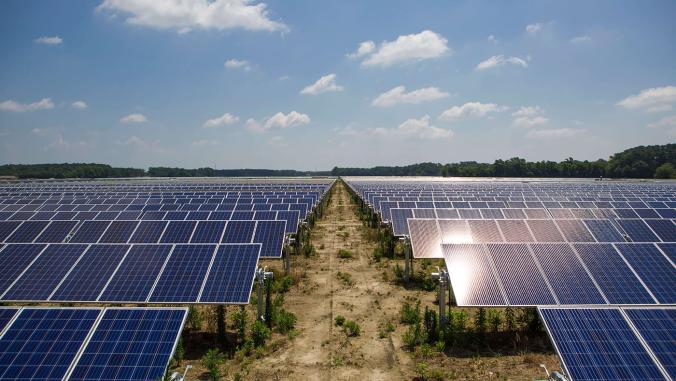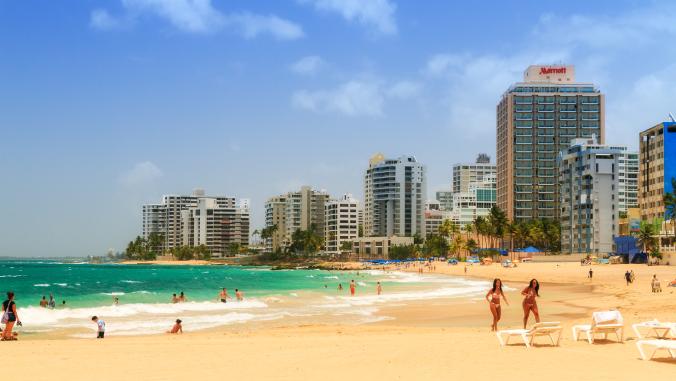From corporate giants, models to scale sustainability
Here's how efforts to increase clean energy and reduce waste have evolved at Walmart and Amazon.

When Walmart jumped into the Hurricane Katrina relief effort in September 2005, the giant retailer gained not only a shiny corporate image, but its leadership also learned how to quickly scale up a new initiative, which they immediately used to jumpstart an ambitious sustainability program.
The following month, Walmart announced three new goals:
- To one day use 100 percent renewable energy.
- To create zero waste.
- To sell products that sustain our resources and the environment.
The Bentonville, Arkansas-based company is 25 percent toward its goal of 100-percent renewables and has new ambitions, said Zach Freeze, Walmart’s senior director of strategic initiatives for sustainability, during a session last week at VERGE 2017.
"It makes good sense for the business, it makes good sense for society and it has evolved," he said. "It’s gone from aspirational commitments. Now we have a path, we have targets and we’re working with our suppliers to change things that we can’t change alone."
Walmart announced late last year that it would cut emissions at its own operations by 18 percent, by 2025, and that it would work with its suppliers to help them cut an additional gigaton, or 1 billion tons, of emissions by 2030, roughly equivalent to the emissions generated by 211 million passenger vehicles in one year.
Walmart is cutting waste and boosting efficiency at its own operations, such as at data centers, packaging operations and delivery vehicles, and the company is working with suppliers to convince them it’s a good idea to update their operations, such as reducing waste at agricultural operations, Freeze said.It makes good sense for the business, it makes good sense for society and it has evolved.
"It’s not something we can tell them to do," he added. "They have to see it as something that benefits themselves, they have to see the value."
Walmart competitor Amazon.com is also making strides in its efforts to reduce waste and use 100 percent renewable energy. The company has 10 solar and wind farms, some of which are still under construction. In addition, the company is installing rooftop solar panels at 15 of its fulfillment centers and plans to install panels on 45 more by 2020.
"We started with energy, the environment and packaging," Kara Hurst, Amazon’s head of worldwide sustainability, said Wednesday during a session at VERGE 2017. "You want to start where your material impacts are."
Amazon’s Amazon Web Services unit has reached its goal of 40 percent renewable energy, and aims to be powered by 50 percent renewable energy by the end of 2017.
A few years ago, however, the Seattle-based e-commerce giant faced sharp criticism about its carbon footprint and what appeared to be a lax attitude toward the environment, compared to competitors Apple, Google and Facebook.
In April 2014, environmental group Greenpeace praised Apple, Alphabet's Google and Facebook for boosting their clean-energy usage, but accused Amazon Web Services of having one of the largest, dirtiest carbon footprints among Internet players.We’re willing to try things that we think would be a good test lab and that we could scale up.
Hurst, whom Amazon hired later that year, said Wednesday that the company had various pockets of sustainability initiatives that needed to be connected as part of a "more holistic view," among other changes the company has made.
"I spend a lot of time out of the office," she said, adding that she and her team are often out "in our own operations, learning, doing waste audits, figuring out how things work. We know those processes really well. We’re willing to try things that we think would be a good test lab and that we could scale up."
Amazon has multiple teams under its sustainability umbrella, including research and development groups that are focused on creating new products and digital systems to increase Amazon’s efficiency, reduce waste and save energy.
"We have 40 software developers creating technology that is implemented within Amazon just for sustainability," Hurst said. "We have packaging innovations and material innovations that will come to market. We’re a different sustainability team."





